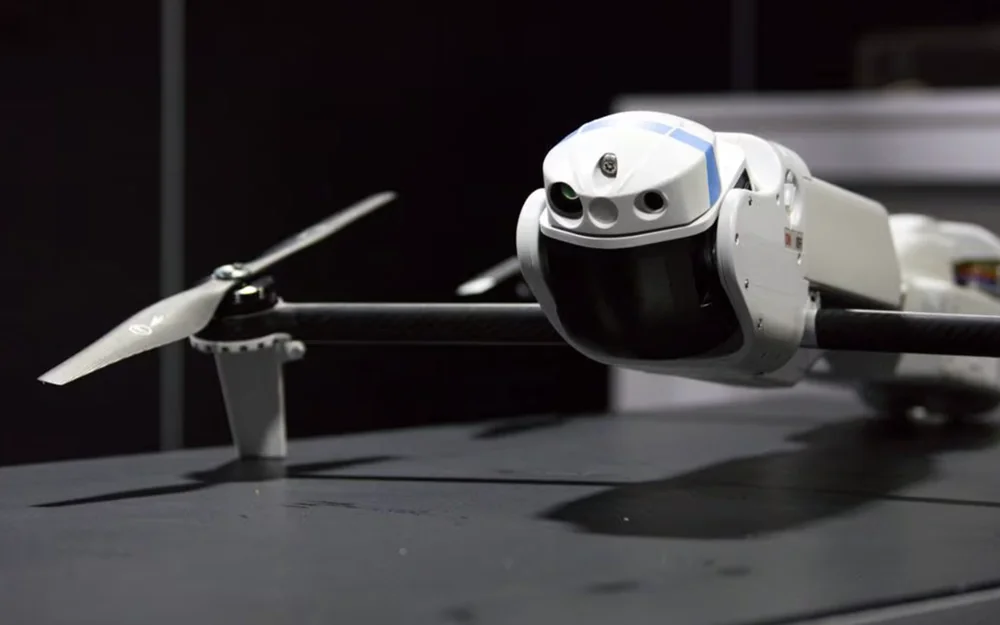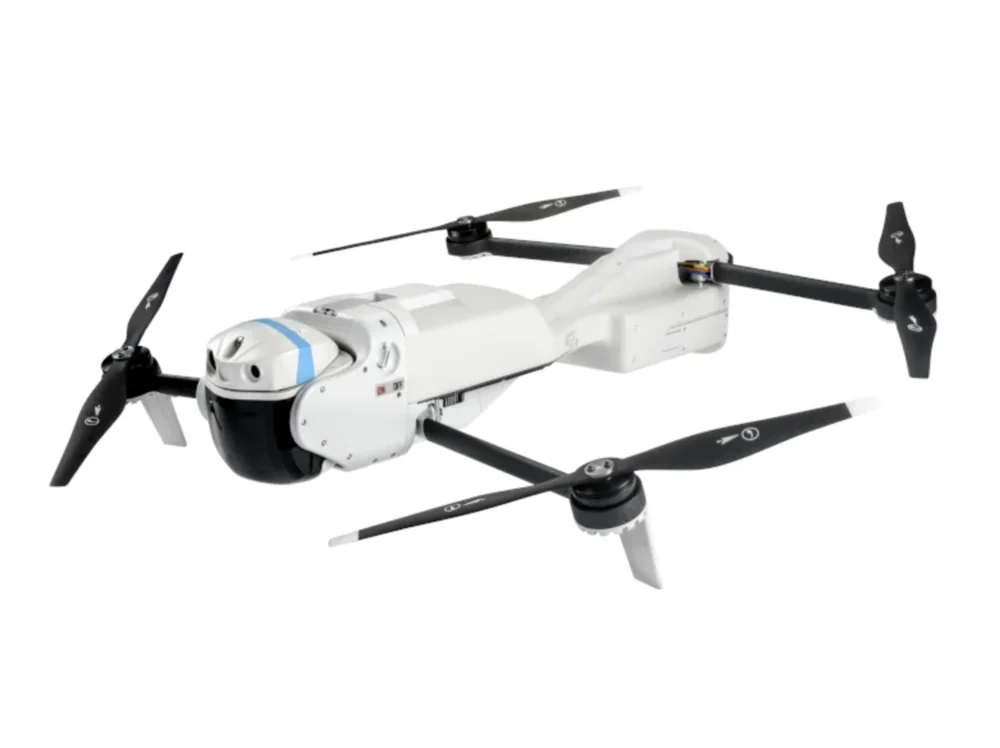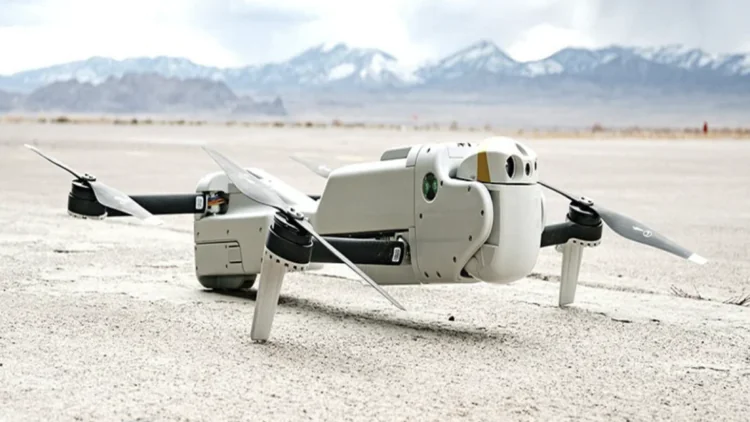Recently, the U.S. Marine Corps received small strike drones, Rogue 1, from Teledyne for testing. Let’s take a closer look at these loitering munitions.
It should be noted that the U.S. Marine Corps has long planned to enhance the combat capabilities of its rifle units through the development and use of lightweight loitering munitions. Several interesting projects are currently being developed to meet these needs. On July 7, 2024, Teledyne FLIR Defense announced that it is offering the USMC a drone called Rogue 1, which is almost ready for testing.
Read also: Best Ukrainian Military UAVs, Part 1: Reconnaissance and Targeting
TABLE OF CONTENT:
OPF-L program (Organic Precision Fires-Light)
The U.S. Marine Corps has long shown interest in loitering munitions and has been studying available samples and market offerings. Recently, they decided to launch their own development programs for such weaponry. The goal of these programs is to create a whole range of kamikaze drones with various characteristics and capabilities to equip rifle units.
It all started in September 2023 with the launch of a program called OPF-L (Organic Precision Fires-Light). The aim of this program is to develop a compact and lightweight loitering munition suitable for mass production and use in modern combat. Commercial organizations with the necessary expertise were invited to participate in the program.

Representatives of the Marine Corps stated that the new program would be long-term and could take up to eight years or even more. In the near future, they plan to develop new equipment and conduct the first tests in 2024. Further research and application studies will be carried out. The budget for all these activities is set at no more than $249 million.
Companies such as Teledyne FLIR Defense, AeroVironment, and Anduril Industries expressed interest in developing new munitions. Their previous projects received the necessary evaluations, and on April 11, 2024, the Marine Corps Systems Command awarded them contracts to continue their work. Now, they need to finalize the development of new loitering munitions, if necessary, and produce batches of equipment for testing.
The Marine Corps did not specify the cost of the contracts or their completion timelines. However, AeroVironment announced that it would receive approximately $9 million for the development and supply of new UAVs. It can be assumed that the other two companies received similar orders.
Last year, the Marine Corps reported that the OPF-L program is not a competition, and the customer does not intend to choose the best of the presented samples. The new loitering munitions from the three contractors will be reviewed and evaluated independently. Any products that meet the military’s requirements will be accepted into service. This means that all three new projects have a chance to reach serial production.
Rogue 1 is one of three
The first company to present its sample was Teledyne FLIR Defense. Instead of developing a loitering munition from scratch, they offered the Marine Corps an already existing product, created in recent years. This is the Rogue 1 UAV, developed in the early part of this decade. In 2022, a batch of these drones was purchased for testing and evaluation by the U.S. Special Operations Command. At that time, Teledyne also offered the kamikaze drones to the Marine Corps but did not secure the desired contract.

Teledyne’s kamikaze drone is named Rogue 1/ The name also references one of the installments in the Star Wars saga.
In early May 2024, the SOF Week conference in the U.S. focused on the development of Special Operations Forces and other military units. During this event, Teledyne FLIR Defense introduced their kamikaze drone, Rogue 1, within the context of the OPF-L program and revealed details of their contract with the Marine Corps.
It was revealed that under the terms of the agreement, the company must produce and provide 127 new model drones for testing by the end of summer. The total cost of this equipment, including development expenses, reaches $12 million, which is approximately $94,500 per unit.
Teledyne FLIR Defense predictably gives its development high marks. Their representatives claim that the Rogue 1 UAV fully meets the customer’s tactical and technical requirements and possesses high combat potential. They support this assertion with technical specifications and several important design features.

Yes, due to its small size, the drone can be operated by infantry and deployed on various transport platforms. With interchangeable warheads, the kamikaze drone is capable of attacking and destroying personnel, structures, and armored vehicles. It also features a unique detonator with a mechanical safety that prevents the loss of the UAV if a strike is canceled or under other circumstances, and allows for the reuse of the munition.
Whether these claims accurately reflect the real potential of the Rogue 1 UAV remains to be seen. However, in the coming months, this product will undergo testing at a range, and Marine Corps specialists will assess its performance. Meanwhile, the two other loitering munitions from different developers will undergo similar evaluations.
Design and technical capabilities of the Rogue 1 UAV
The Rogue 1 UAV is built on the quadcopter principle. However, its design, configuration, and onboard equipment include features tailored to its intended purpose. The kamikaze drone has a length of approximately 500-600 mm and weighs around 4.5 kg, making it easy to carry by its operators or transport by various means.

The main element of the design is an elongated fuselage with a complex shape, made of plastic. It features a reinforced box-like nose section, which likely houses the control equipment. This nose section is connected to the rear compartment via a thin strut, where a removable battery is located. On the sides of the fuselage, there are pivoting arms with motorized propeller units. During transport, these arms are folded along the fuselage. When folded, the UAV fits into an elongated container with a square cross-section.

The Rogue 1 UAV is equipped with four electric motors with lift propellers. The specifications of the motors are not detailed. This power setup allows the drone to reach speeds of approximately 110 km/h. The battery provides a flight duration of 30 minutes, and the system’s operational range is limited to 9.6-10.0 km based on the equipment’s parameters.
In the nose section, there is a removable module with a compact electro-optical station and a warhead. The drone features a FLIR Boson 640+ station with both day and thermal imaging channels. The video signal is transmitted in real-time to the operator’s control station, enabling surveillance, target acquisition, and targeting. It is not yet specified whether there is a target tracking function.

The fuselage, along with the electro-optical system, contains a warhead of one of three types. The primary warhead is a cumulative-fragmentation charge weighing 454 grams. Additionally, fragmentation-high explosive and inert warheads of similar mass have been developed. The small mass and power are intended to be offset by high-precision targeting through an advanced electro-optical system and a highly maneuverable air platform.

The warhead is equipped with a unique detonator featuring a mechanical safety and an indicator. The safety is manually controlled using a large and noticeable switch. It is claimed that this setup theoretically allows the retrieval and reuse of a loitering munition that has failed to detonate. The Rogue 1’s thermal safety system includes an innovative mechanical interruption that ensures safe recovery and reuse of the drone in scenarios where targets change or missions are interrupted. The developers believe that this feature will simplify and reduce the cost of operator training and optimize the combat use of the kamikaze drone.
Possibilities of using Rogue 1
The developers note that the Rogue 1 can operate beyond the reach and capabilities of conventional weapon systems, allowing for minimized collateral damage and maximizing opposition capabilities.
Thanks to its ability to be recovered and reused, the Rogue 1 platform offers enhanced cost-effectiveness and flexibility.

The drone has already demonstrated its effectiveness during tests against both moving and stationary armored vehicles, transport vehicles, and infantry. It provides troops with the capability to deliver precise strikes on both moving and stationary armored targets, lightly armored vehicles, and enemy personnel.
Prospects for the Rogue 1 UAV
The Marine Corps and other branches of the U.S. Armed Forces have long recognized the value of loitering munitions. They are now searching for the best examples of this class for future procurement and mass deployment in the field. As mentioned earlier, the OPF-L program was launched last year with the goal of enhancing the firepower of frontline units in the medium term.
Under the OPF-L program, the Marine Corps plans to evaluate three new loitering munitions from different manufacturers. One participant is already known, and the other two are expected soon. Testing will take place later this year, and initial conclusions will be drawn based on the results. It is currently unknown which of the presented UAVs will meet the Marine Corps’ requirements.

The prospects for the Rogue 1 from Teledyne FLIR Defense are still uncertain. This UAV is involved in two Pentagon programs but has not advanced beyond the testing phase. It is likely that by 2024-2025, it will become clear whether the Marine Corps and Special Operations Forces will order the kamikaze drone from Teledyne and whether it will be adopted into service.
Overall, the Rogue 1 appears to be a very promising project. It would be great to see such a loitering munition in the inventory of the Armed Forces of Ukraine!
Read also:









